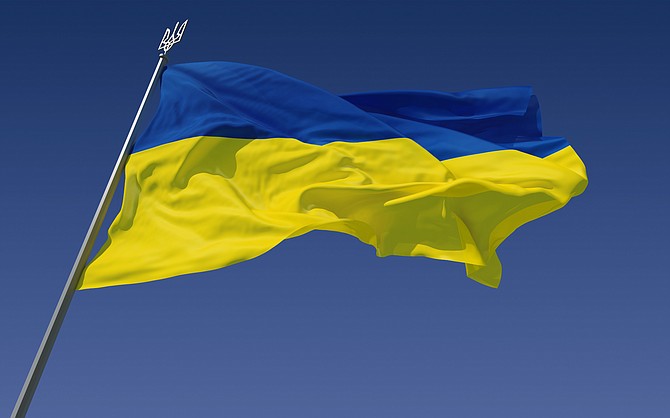 Facebook
Facebook
 X
X
 Instagram
Instagram
 TikTok
TikTok
 Youtube
Youtube

One hundred years ago a Ukrainian composer named Mykola Leontovich found an ancient tune of four notes and set them to text about the coming of spring. The story of the song was about a swallow that enters a home and starts proclaiming the arrival of spring.
The bird is insistent with its four note song. Over and over and over it sings of the abundance of what is to come. The song was often sung in mid-January at the start of the Julian New Year.
The version we all know at this point is the Ukranian Bell Carol, with lyrics by Ukrainian American Peter Wilhousky. This version was launched into the Christmas ethos in the 1930s with Wilhousky copyrighting his version in 1936.
Wilhousky’s arrangement had the good fortune of having the NBC orchestra and Arturo Toscanini performing it regularly. Leontovich’s version had the bad fortune of being composed at the start of Soviet Russia.
1916 was a bad year, as has been 2016, for the Ukraine. It was an active area of the Eastern Front in World War I. After Russia exited the war Ukraine experienced several years of internal strife until falling under Soviet domination in 1921.
Leontovich’s song was long forgotten by the 1920s. In the 1990s a Rice University anthropology graduate, Anthony Potoczniak, was caroling with a group of singers in Western Ukraine. They happened to sing the Ukrainian Bell Carol and were told that it was too early to sing that song since it was a New Year’s song.
The Ukraine did not recognize the song as a part of their Christmas tradition. They did recognize the tune because it was a familiar folk tune. The tune itself may have existed before Christianity came to the Ukraine.
I must say that the repetition of the four-note theme is quite reminiscent of a persistent little bird singing about the inevitable coming of spring. Wilhousky was reminded of bells and the rest is history. This pre-Christian tune is now one of the most recognizable Christmas songs of all time with any number of arrangements from the ridiculous to the sublime.


One hundred years ago a Ukrainian composer named Mykola Leontovich found an ancient tune of four notes and set them to text about the coming of spring. The story of the song was about a swallow that enters a home and starts proclaiming the arrival of spring.
The bird is insistent with its four note song. Over and over and over it sings of the abundance of what is to come. The song was often sung in mid-January at the start of the Julian New Year.
The version we all know at this point is the Ukranian Bell Carol, with lyrics by Ukrainian American Peter Wilhousky. This version was launched into the Christmas ethos in the 1930s with Wilhousky copyrighting his version in 1936.
Wilhousky’s arrangement had the good fortune of having the NBC orchestra and Arturo Toscanini performing it regularly. Leontovich’s version had the bad fortune of being composed at the start of Soviet Russia.
1916 was a bad year, as has been 2016, for the Ukraine. It was an active area of the Eastern Front in World War I. After Russia exited the war Ukraine experienced several years of internal strife until falling under Soviet domination in 1921.
Leontovich’s song was long forgotten by the 1920s. In the 1990s a Rice University anthropology graduate, Anthony Potoczniak, was caroling with a group of singers in Western Ukraine. They happened to sing the Ukrainian Bell Carol and were told that it was too early to sing that song since it was a New Year’s song.
The Ukraine did not recognize the song as a part of their Christmas tradition. They did recognize the tune because it was a familiar folk tune. The tune itself may have existed before Christianity came to the Ukraine.
I must say that the repetition of the four-note theme is quite reminiscent of a persistent little bird singing about the inevitable coming of spring. Wilhousky was reminded of bells and the rest is history. This pre-Christian tune is now one of the most recognizable Christmas songs of all time with any number of arrangements from the ridiculous to the sublime.
Comments